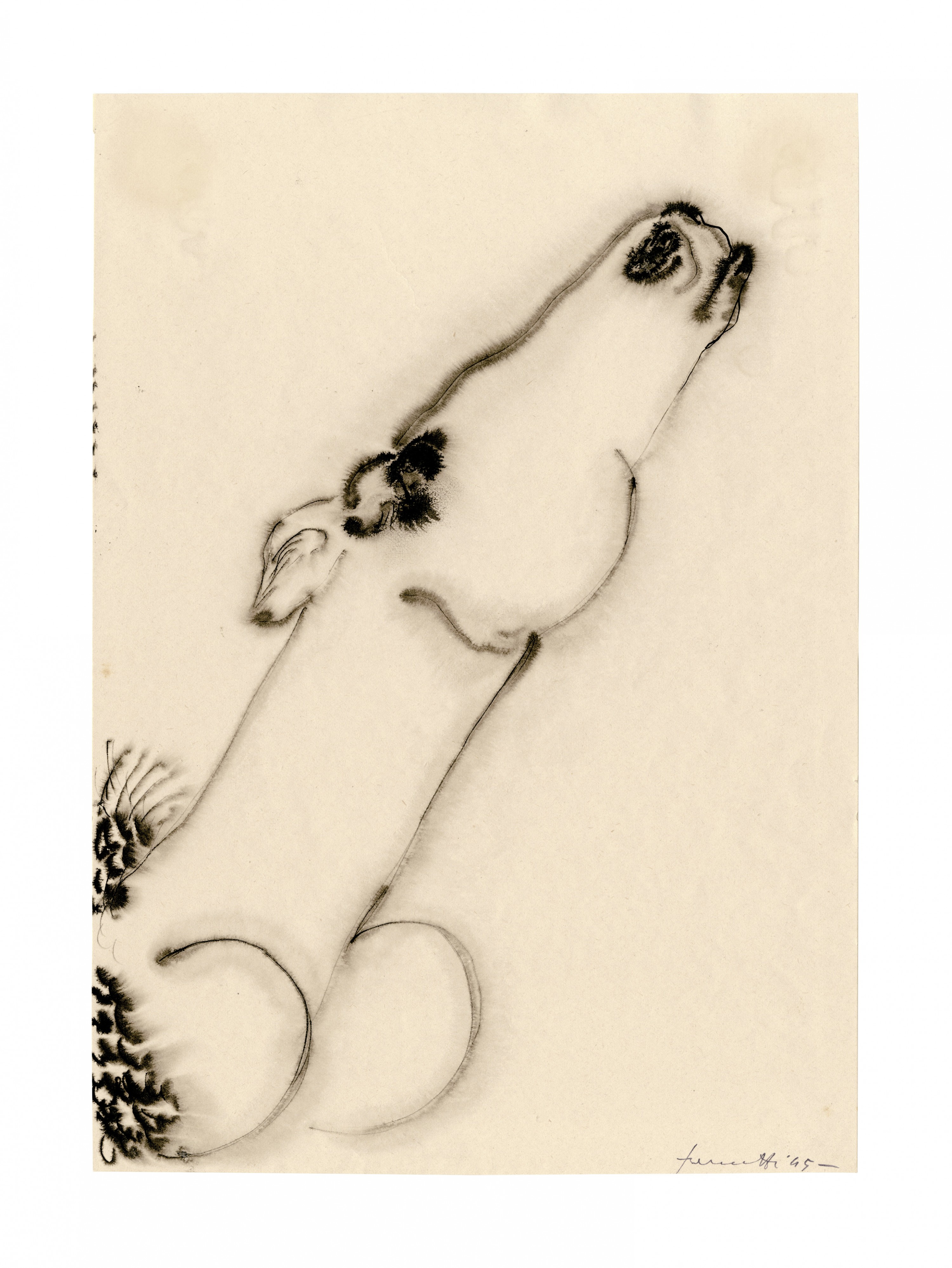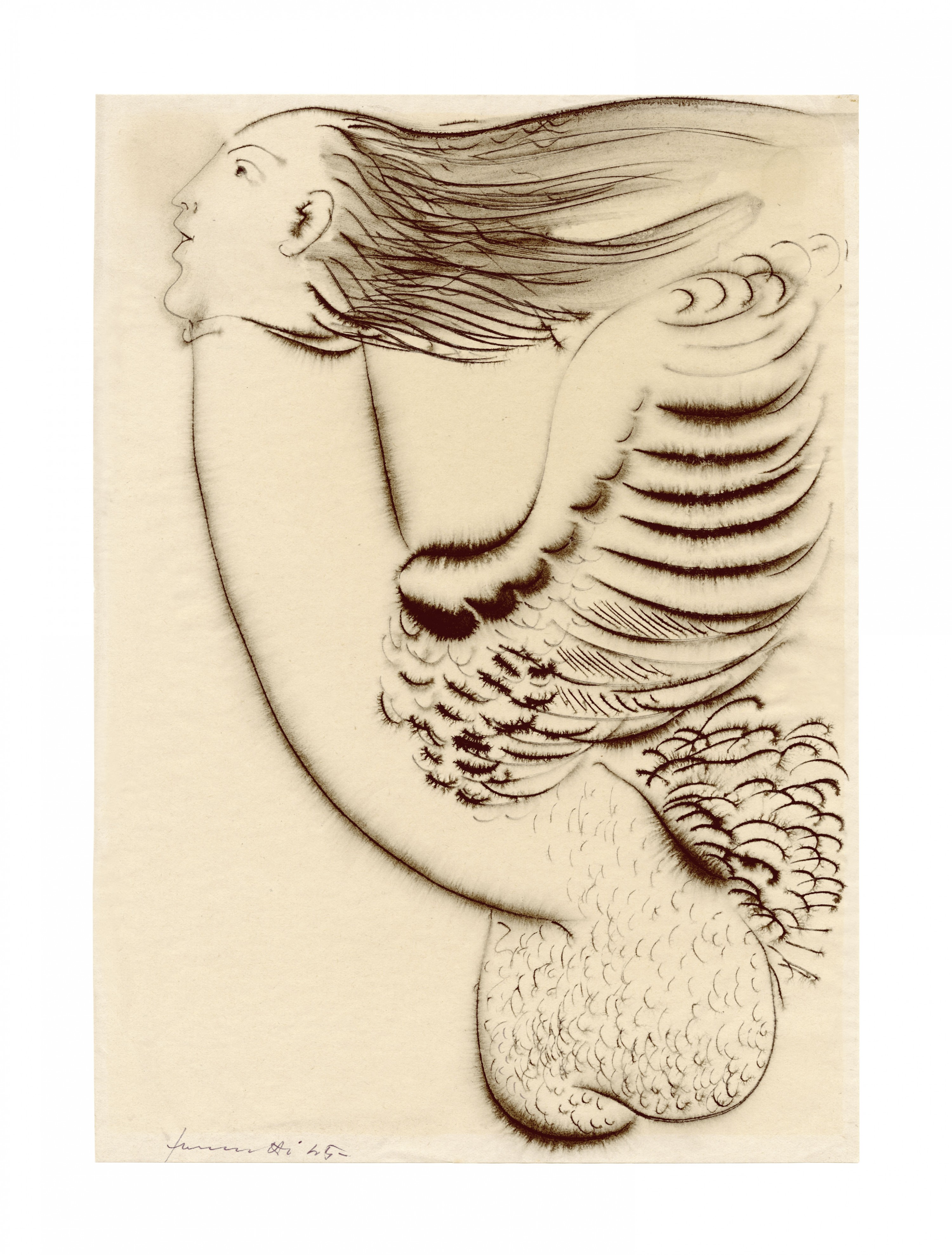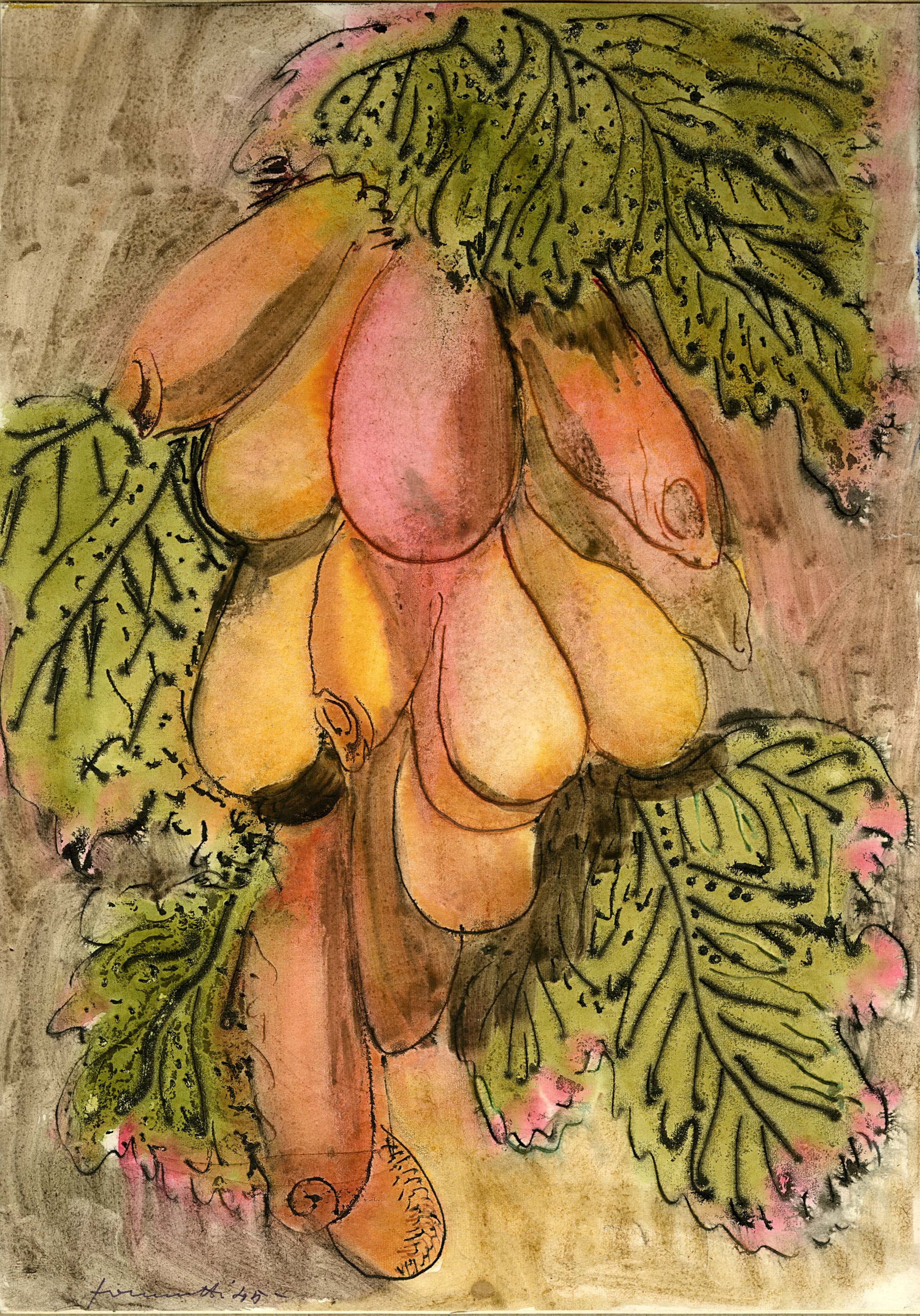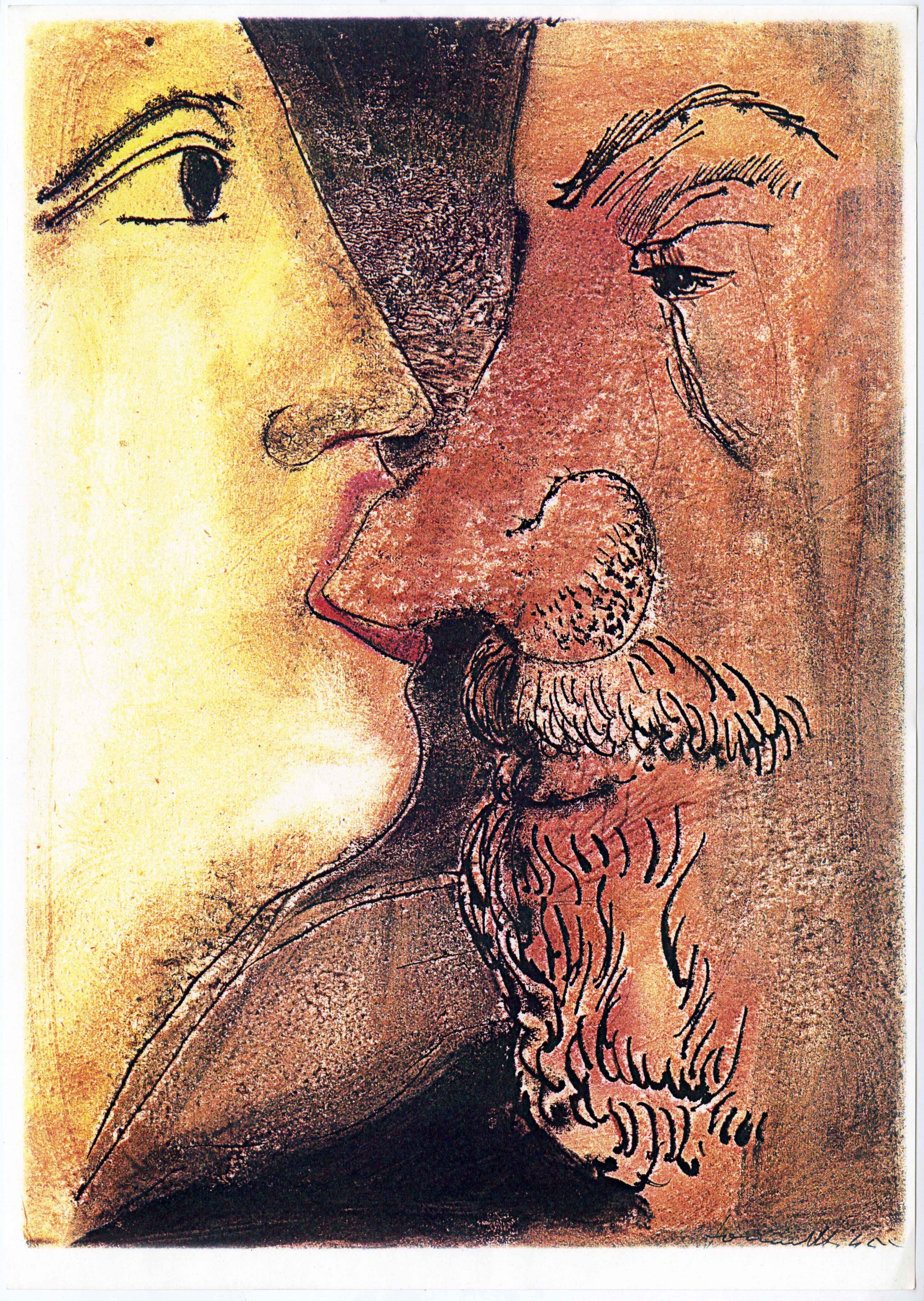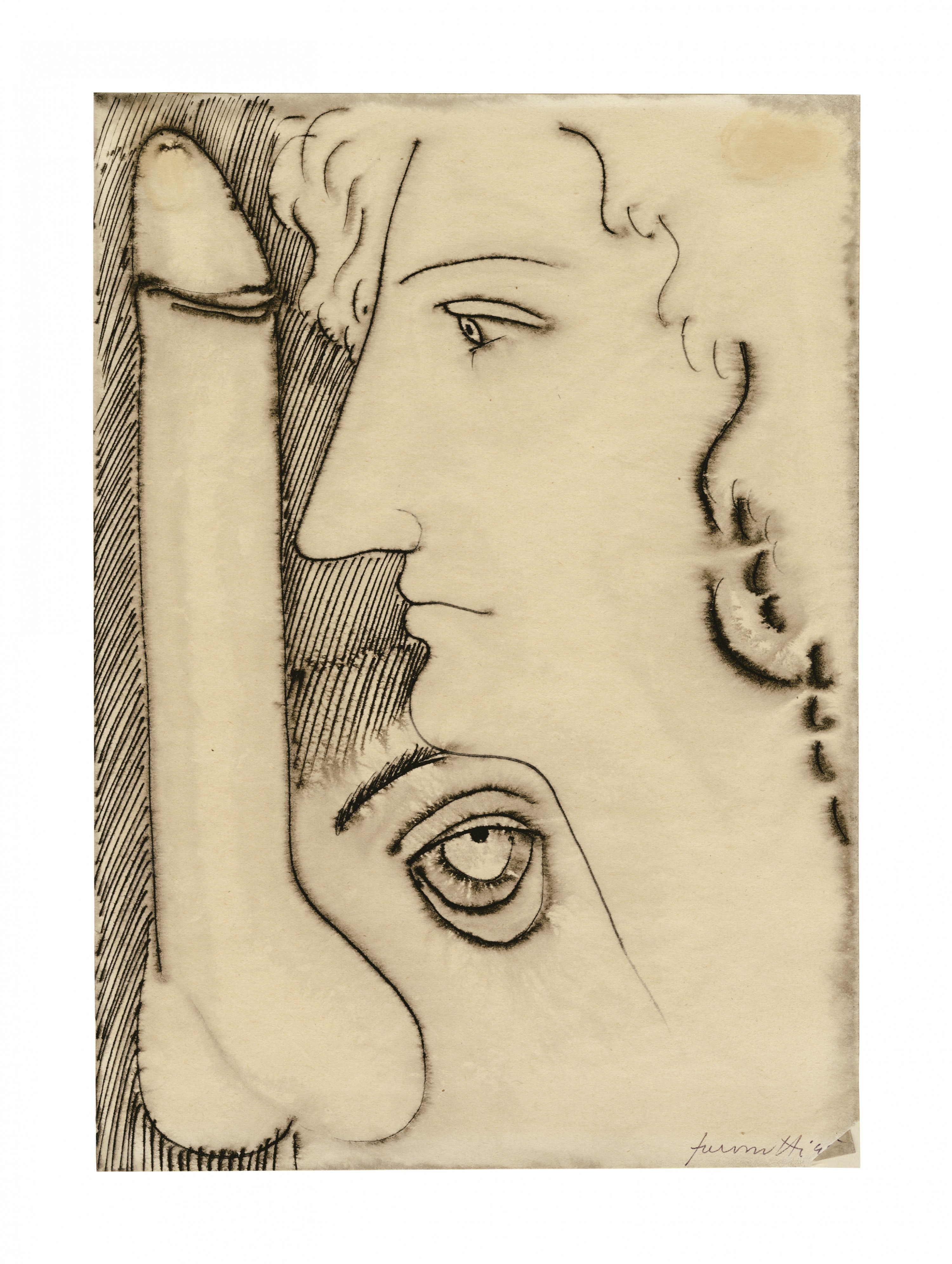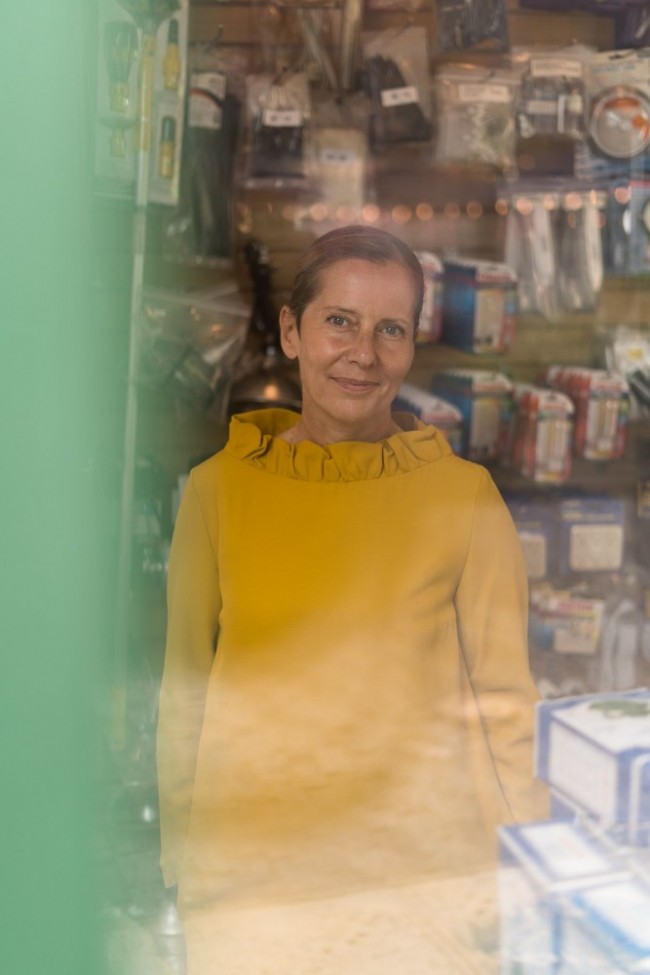FLESH FOR FANTASY: RECOVERING PIERO FORNASETTI’S EROTIC OEUVRE
The late Piero Fornasetti (1913–88) was never one to shy away from the wildest recesses of his imagination. His Milanese namesake company is likely to conjure the vivid and whimsical illustration of Lina Cavalieri’s face from his series Tema e Variazioni (begun in 1952), which was applied to everything from porcelain plates to cabinets, wallpapers, and chairs. But Fornasetti also collaborated with Italian master architect and designer Giò Ponti on a series of hand-painted credenzas, fabric designs, and interiors (including aboard the doomed ocean liner Andrea Doria (1952)), with patterns that featured celestial bodies, anthropomorphized flora and fauna, and magical flying machines. In addition, he was an engraver, a collector, a gallerist, a stylist, a sculptor, and, not least of all, a painter. All told, Fornasetti produced over 13,000 objects during his lifetime. “He was in love with his work — that was the most important thing in the world for him,” says Barnaba Fornasetti, who took over the family atelier after his father’s death.
But the elder Fornasetti’s curiosity and eclecticism didn’t stop there. He also produced a body of work openly dealing with the pleasures of the flesh that, until now, has mostly been kept hidden from view. An Instagram account going by the handle @p.ornasetti surfaced a few months ago to resurrect this somewhat lascivious chapter in Fornasetti history, allowing a randy romp through the erotic oeuvre that he began creating in the mid-1940s, during a three-year exile in Switzerland. Fornasetti spun a whole fantasy land out of different body parts — from a pile of male members that evokes a bushel of vegetables, to noses that become phalluses, the sweetly risqué imagery reflects his vivid imagination. “He used to tell me that even in his dreams he saw incredible and surreal visions of this kind,” says Barnaba. Among his erotic oeuvre was a set of 69 pencil-and-ink drawings that he intended to publish in a limited edition entitled Elogium Mentulae (“In Praise of the Penis”), a project that never came to fruition. “My father was fighting against the moralism that forbade the exhibition of the naked human body,” says Barnaba. He tried again in 1973, though that attempt failed too. Perhaps the Instagram account, which has so far resisted the app’s vigilant censors, will spur a third-time-lucky bid to reproduce the images in some physical form, book or otherwise. “My dream would be to take them to a historic nightclub…”, says Barnaba.
Taken from PIN–UP 19, Fall Winter 2015/16.

